Potatoes are one of the most versatile vegetables around. You can boil ‘em, mash ‘em, and stick ‘em in a stew, but you can also shove them into sandwiches and waffle them into new and interesting conformations. We’ve already covered mashers pretty extensively, but there’s still so much more to say. Here are 10 tasty things you can do with the humble spud, in no particular order.
Put them in sandwiches
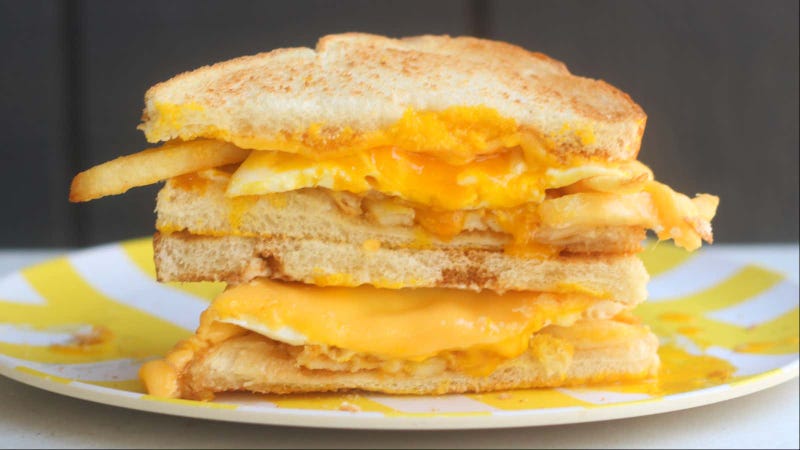
Photo: Claire Lower
I am a firm believer in potatoes on sandwiches. Whether it’s a breakfast sandwich, cold cut sandwich, or deli salad sandwich, there’s corresponding potato product that will really make it special. I used to be all about the hash brown patty on my BEC, but right now I’m on a breakfast french fry kick, as the criss-crossed network of potatoes really helps hold the whole thing together.
You should read our detailed guide to potato-ing all sorts of sandwiches, but keep in mind that potatoes are more than just an accent—they make a great meat-free filling, especially little round tater tots and flat hash brown patties.
Or use them as a toast substitute
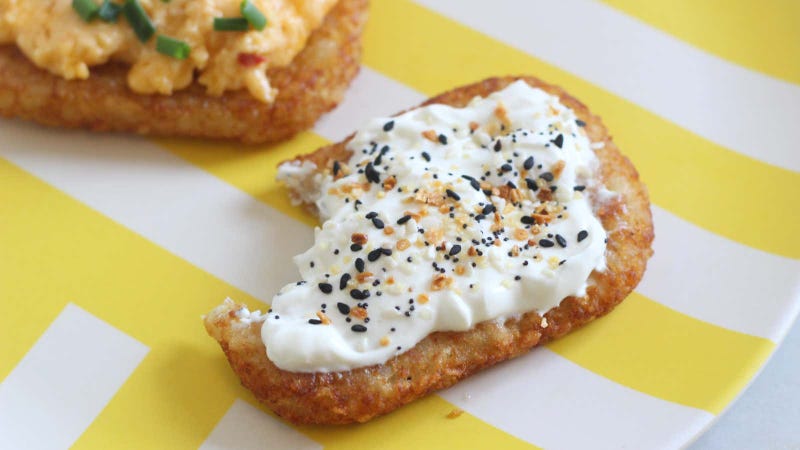
Photo: Claire Lower
If putting potatoes between bread isn’t your thing, use them as bread instead. Hash brown patties—the frozen oblong kind—make excellent delivery systems for a wide variety of breakfast foods, including spreads, eggs, and avocado. If you would put it on toast, you should put it on a hash brown patty and it will, in my esteemed opinion, be the better for it.
Waffle them
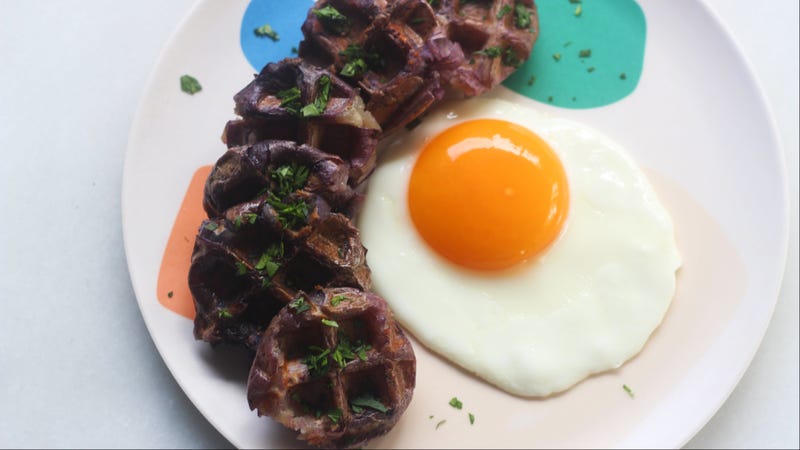
Photo: Claire Lower
Tater tots, hash brown patties, and tiny, whole par-cooked spuds all do extremely well when smashed between the hot grates of the waffle iron. The appliance smashes and sears, creating divots—aka more surface area—and maximizing crispiness. You can even waffle leftover french fries to excellent results, if (like me) you are the type of person who chronically over-orders fries.
Make restaurant-worthy fries with lots of duck fat (or beef tallow)

Photo: Claire Lower
Making french fries from fresh potatoes is a scam, mainly because the best fries are fries that have been cooked twice, which means double the labor for the fry cooker. Luckily, you can buy pre-cooked frozen fries from the grocery store, then shallow fry them in duck fat or beef tallow (or vegetable oil, if you must) for restaurant-worthy frites. (This is, in fact, what a lot of restaurants do—even the fancy ones—because, as I explained a couple of sentences ago, making fries from fresh potatoes is a scam.)
And reheat them in the air fryer
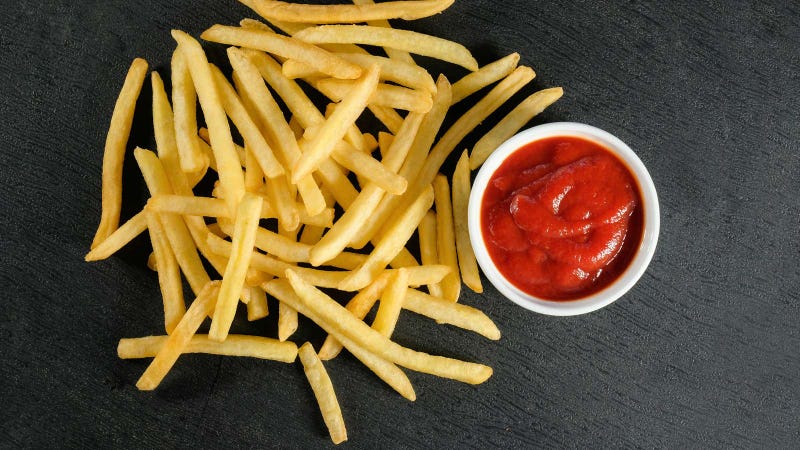
Photo: shablovskyistock (Shutterstock)
Once you realize you can make incredible fries within the four walls of your home, you are likely to make too many. Waffling leftover fries transforms them into something new—a kind of fry raft, perfect for sunny-side up eggs—but air frying restores them to their former, just-cooked glory. The hot, circulating air drives off moisture and gets any dormant fry grease movin’ and groovin’, re-crisping the potato’s crust. And while the insides aren’t quite as tender and fluffy as they are when you first take them out of a deep fryer, they are pretty damn close.
Another fantastic, fry-related use for the air fryer? Perking up takeout fries that may have lost their luster during transport. A minute or two at 400℉ is usually all it takes.
Actually, you should air fry all the potatoes
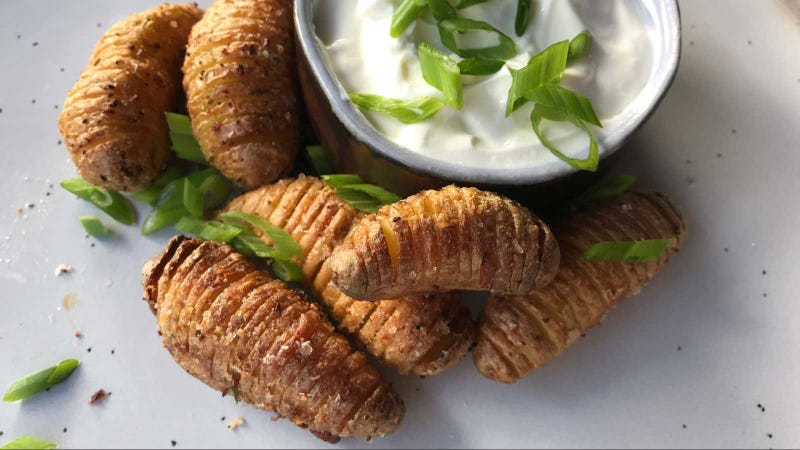
Photo: Claire Lower
Haters will say these look like grubs, but air-fried hassleback potatoes are the perfect dipping potato (the little grooves are quite grabby). The key to good hasselback potatoes lies in making super thin slices about three quarters of the way through the tuber before cooking, which is easily accomplished by placing a chopstick on each side of the spud before slicing.
If you don’t feel like committing to all that knife work, don’t worry, halved and whole tiny potatoes do just fine in the little compact convection oven—just toss ‘em in oil, season them with salt, and cook in a 400-degree air fryer for 15-20 minutes until they’re soft, golden, and crispy.
Clean out your fridge with a baked potato bar

Photo: Claire Lower
One of my favorite ways to use up the “last little bits” of roasted vegetables, cheeses, and a few olives is to stuff it all into a potato. Baked potatoes are the perfect vehicle for every leftover, every anemic vegetable, every scrap of cheese, and every glug of about-to-expire salad dressing. And they’re fun. No one has ever remained sad while eating a hot, buttery baked potato loaded with stuff. It cannot be done.
In addition to helping you cut down on food waste, a baked potato bar is an easy, low-effort weeknight supper. Slather the spuds with fat (like bacon grease or Crisco), sprinkle them with salt, stab them a few times with a fork, then pop them in a 425℉ oven for 50-60 minutes until the skin is crisp and the insides feel completely soft when tested with a fork. Remove the potatoes from the oven and let them cool for five minutes before loading them up.
Use peels to make “hash browns”
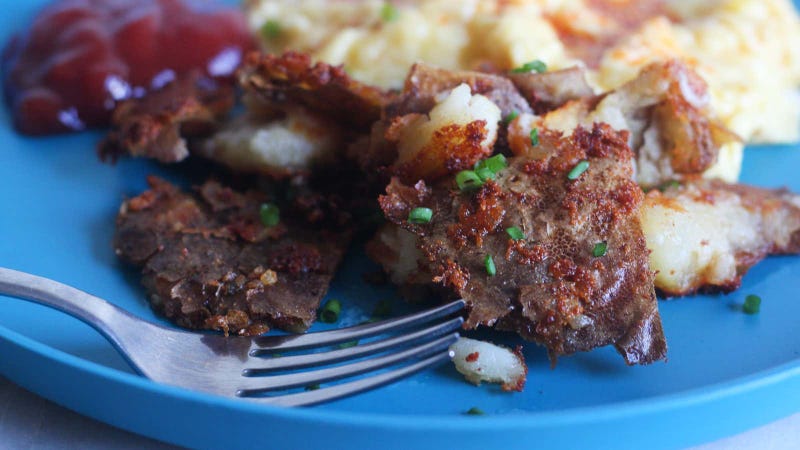
Photo: Claire Lower
I love the crispy skin of a baked Russet, but sometimes I get full on the fluffy innards (and cheese and bacon) before I get to outside of the potato. Luckily, these scooped-out spud shells make excellent breakfast potatoes. All you have to do is chop them into bite-size pieces, crisp them up in some kind of fat, and season them with salt (or sprinkle on some cheese, or chives). Eat with runny-yolked eggs.
Make a gratin with three ingredients
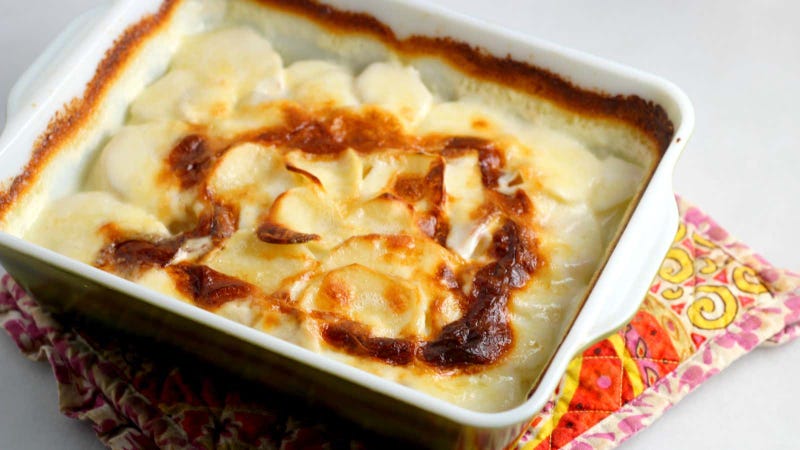
Photo: Claire Lower
Did you know that potatoes gratin doesn’t technically require any cheese? In fact, the best version of the dish I’ve ever had (in France, in Julia Child’s own kitchen) was a simple, elegant recipe that was comprised of potatoes, heavy cream, and a little salt. Sure, you could add cheese, but the cream provides so much fat and flavor, you really don’t need. (Just look at how well it browns! Really take it in!)
Use roasted potatoes for a better potato salad
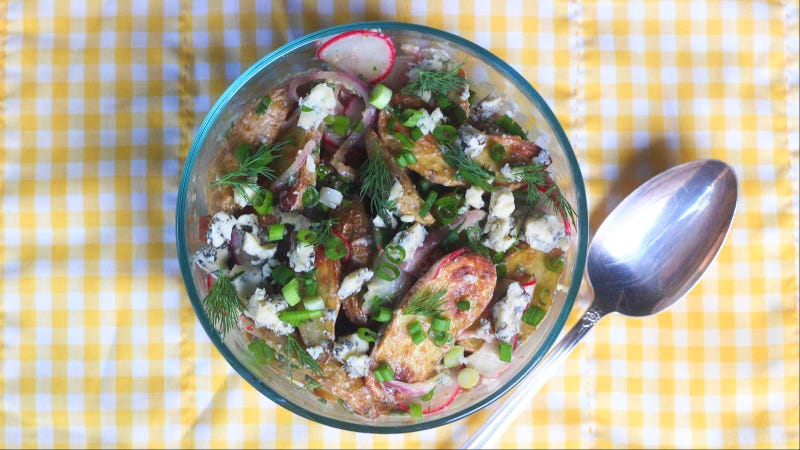
Photo: Claire Lower
Roasting vegetables give them a deeper, sweeter, more complex flavor, which is why I wish they made their way into more salads. Roasting potatoes before tossing them with a (usually) mayo-based dressing gives your salad a stronger backbone. You can add roasted potatoes to any potato salad you desire, but I highly recommend this recipe I developed specifically with roasted potatoes in mind.
Bonus: Drag your knife for easier chopping
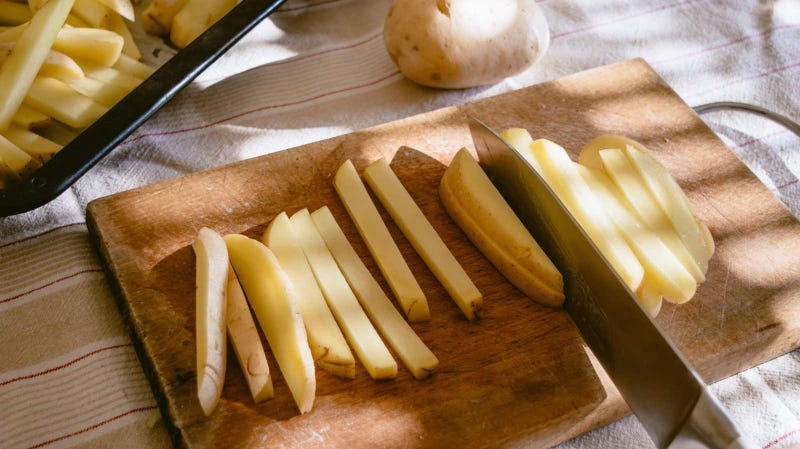
Photo: okeykat (Shutterstock)
Before you can eat a potato, you must—in many cases, at least—chop a potato, and sometimes this leads to a potato sticking to your knife. It’s not great tragedy, but some people find it annoying, and there is a very simple solution: Drag your knife towards you while slicing, instead of pushing the blade towards the cutting board. This maneuver will allow you to chop, slice, and dice your potatoes more efficiently, which means they’ll make their way into your mouth a little more quickly.
This article was written by Claire Lower from Lifehacker and was legally licensed through the Industry Dive publisher network. Please direct all licensing questions to legal@industrydive.com.






